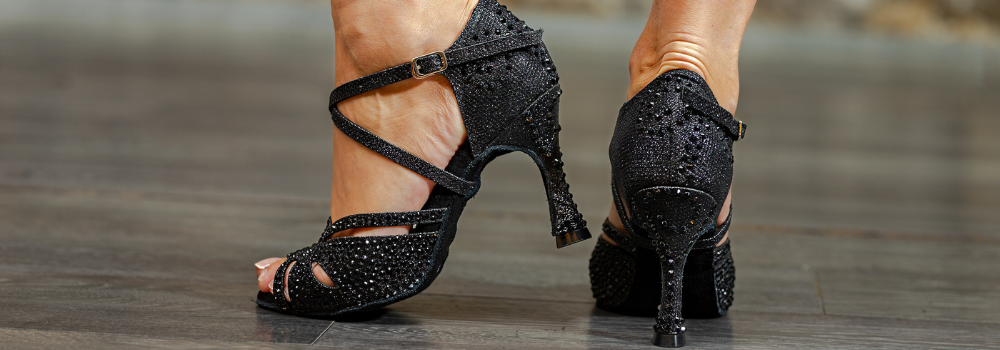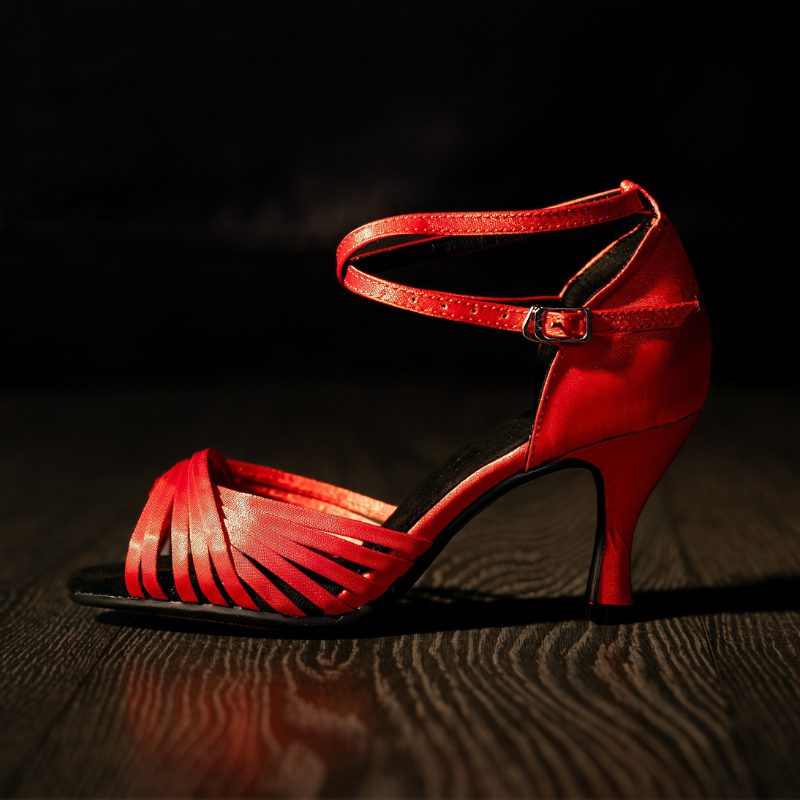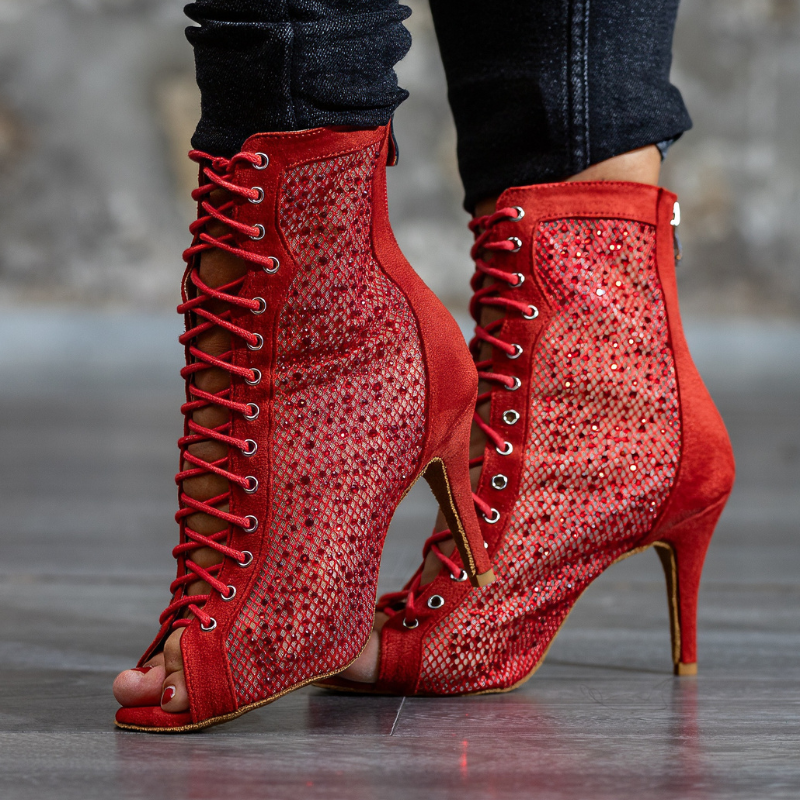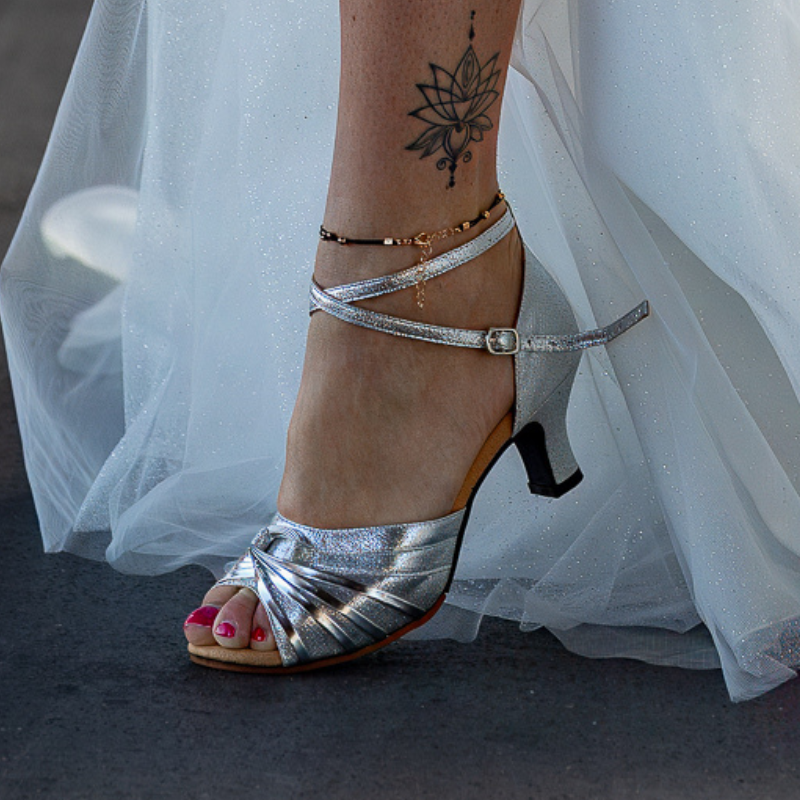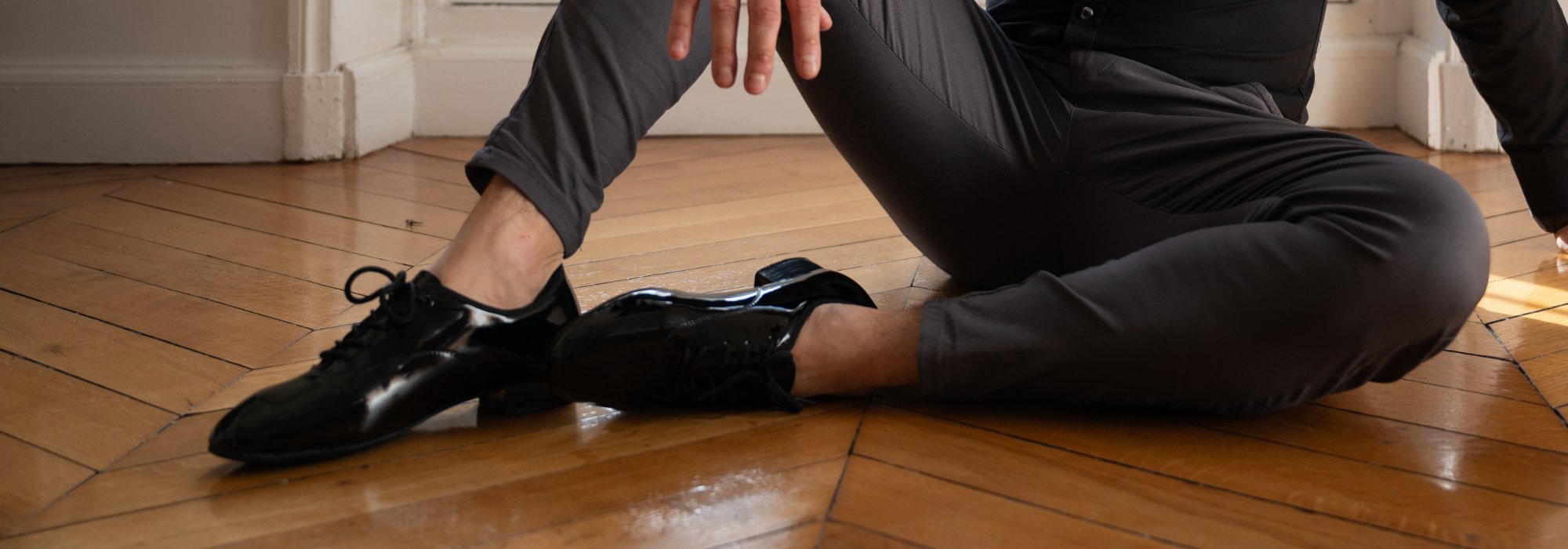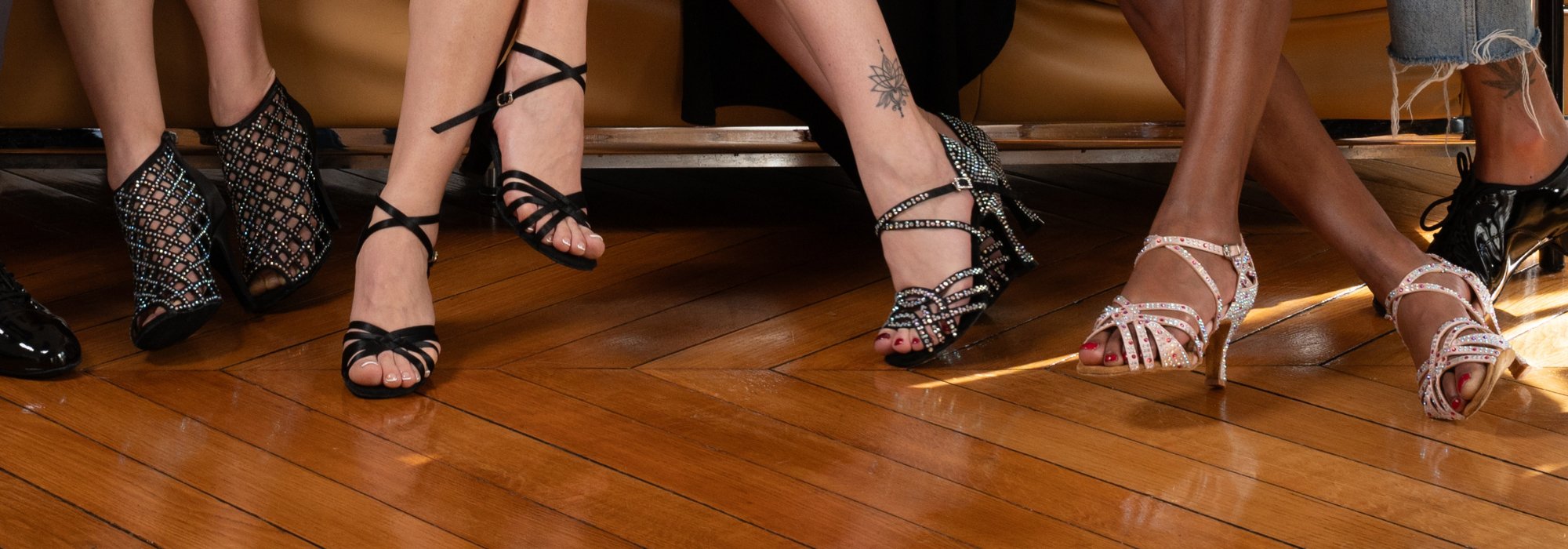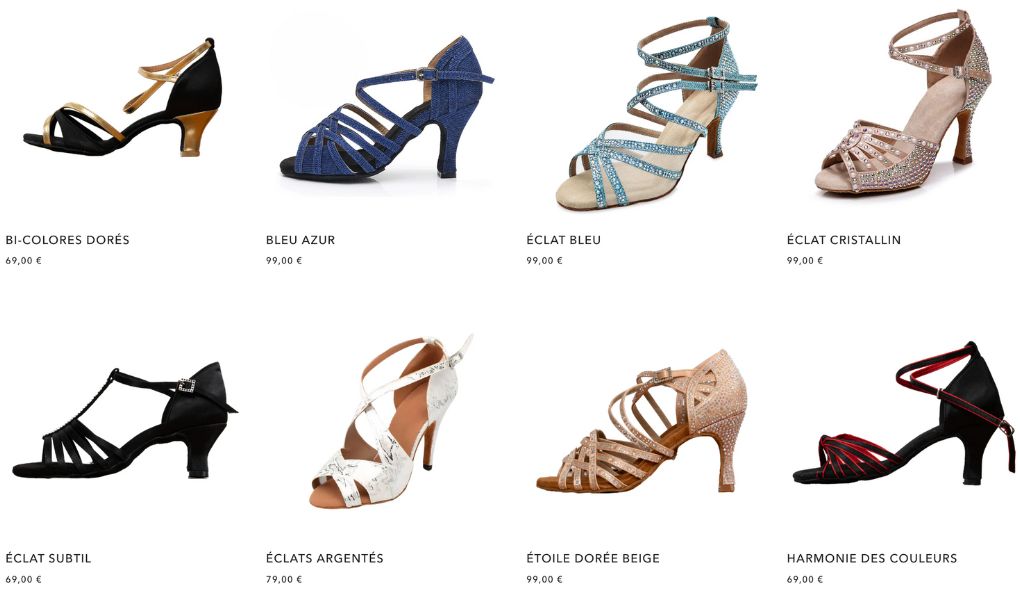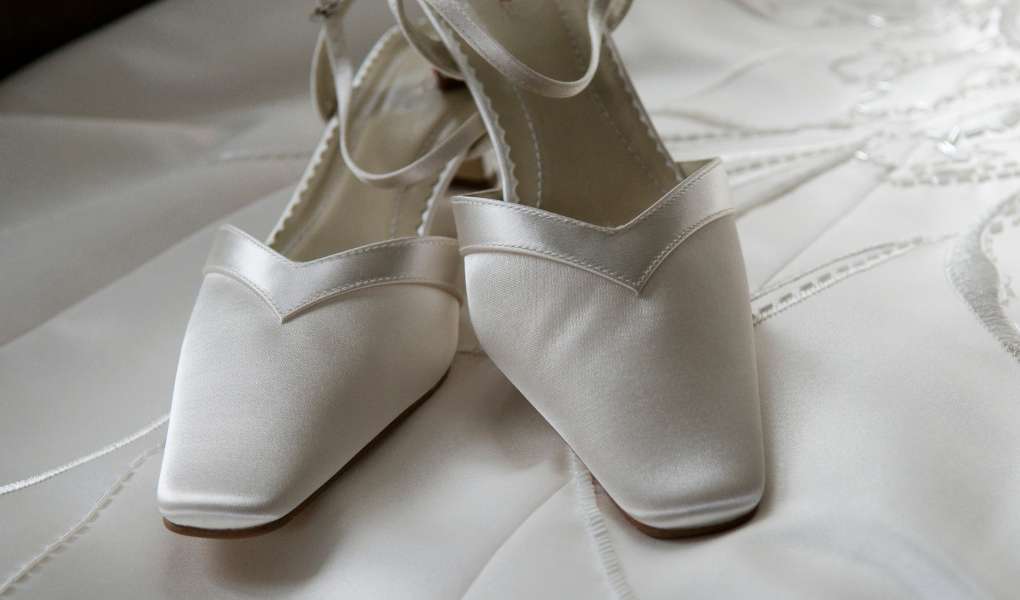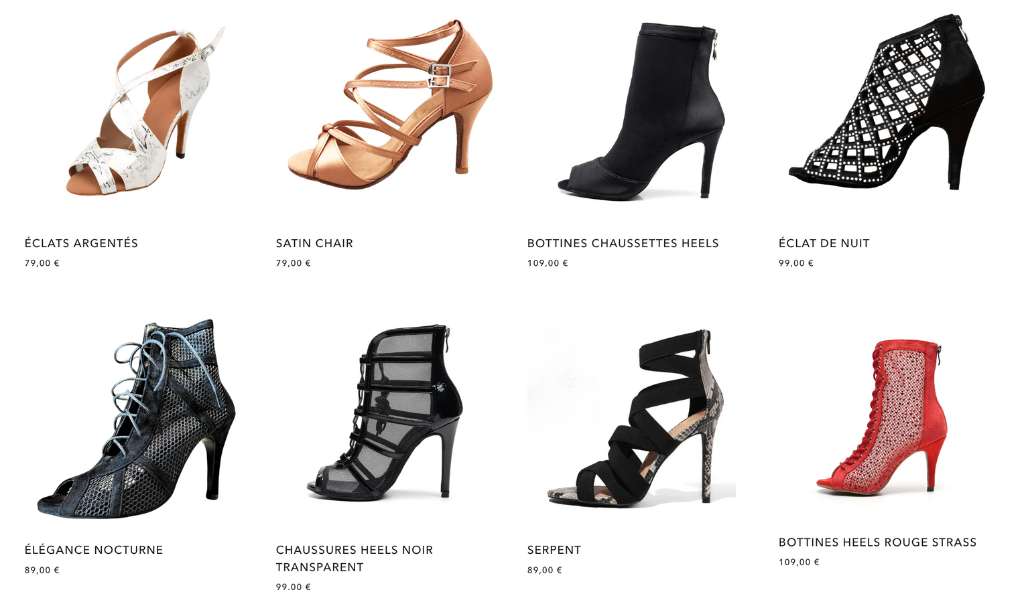Which heel for dancing?

Are you new to dance and wondering which heel to choose to maximize your comfort and performance? Not sure which heel height, sole type or model is best for your level? This guide is for you!
Whether you're a beginner, intermediate or advanced dancer, the choice of heel is crucial to your safety, posture and dancing style.
To begin dancing in heels, a minimum height of 2 to 4 cm is often recommended to obtain good support and feel the movements fully. If you're comfortable in heels on a daily basis and have good ankle flexibility, you might consider starting with a higher heel, such as a stiletto.
In this guide, you will discover :
- Different types of heels for different levels of experience
- How to choose the right height for your dance style
- Insoles and materials for optimum comfort
Ready to master the art of dancing in heels? Let's get started!
The different types of heels

1. Flared shoes
Flared heels offer a wider base at ground level, providing added stability. Their heel type is particularly suited to beginners or dancers looking for extra support during rotations and complex movements. They are well suited to Latin dances such as salsa, where good grip and control are essential.

2. Stiletto shoes
Thinner stiletto heels add elegance and refinement. They are favored by experienced dancers because they accentuate the line of the leg and offer a slender silhouette. However, they require a certain amount of control and balance to avoid twisting or becoming unbalanced. Their heels are ideal for artistic performances or dances where aesthetics play an important role (such as tango or bachata).

3. Thick-heeled shoes
Thick-heeled shoes offer a compromise between stability and style. They provide a solid base while allowing fluid, precise movement. Their heel type is perfect for dancers who want to combine aesthetics and safety, especially when dancing with fast movements or changes of support.
Choosing the right heel height for your dance style
Heel height is a key element in ensuring optimum comfort and performance on the dance floor. The choice depends on your dancing style, level of experience and personal comfort.
-
Low heels (approx. 2-4 cm): suitable for beginners and dancers looking for greater stability. They're ideal for learning the basics without putting too much pressure on the joints.
-
Medium heels (5-7 cm): Recommended for dancers with some experience. They offer a good balance between stability and flexibility for complex movements.
- High heels (7-8.5 cm): For many dancers, a 7-8.5 cm heel is a good compromise. It maintains a perfect balance between comfort, aesthetics and performance. This height is particularly suited to Latin dance, where fluidity of movement is paramount.
Which heel to choose according to your level of experience?
1. Beginners
When you start dancing in heels, it's essential to prioritize safety and stability. Thick, flared heels offer a wider base that limits the risk of imbalance.
Start with low heels (2-4 cm) to learn to control your footing without putting excessive strain on your joints. The aim is to develop your self-confidence while minimizing the risk of injury.
2. Intermediate level
Once you've gained some experience, it's time to take up the challenge with medium heels (5-7 cm). This height allows you to work on your flexibility of movement while maintaining adequate stability. Medium-height stilettos are ideal for improving your balance, refining your posture and diversifying your dance style.
3. Confirmed
For advanced dancers, high heels (7 cm - 8.5 cm) are an excellent choice to enhance your performance. Stilettos offer an elegant silhouette and enhance the fluidity of your movements. However, this height requires perfect control of your balance and technique to avoid twists or imbalances.
Choice of materials and soles for dance shoes with heels
1. The suede sole
The suede sole is particularly recommended for dancing on smooth floors such as parquet, linoleum or tiles. It offers an excellent compromise between grip and glide, and facilitates rotations while allowing good control of support. However, it's crucial to note that this sole is not suitable for outdoor use, as it wears quickly on contact with concrete, gravel or wet surfaces.
If you're planning to dance indoors only, this is the best choice to ensure good support.
2. The all-terrain sole
For dancers looking for versatility, the all-terrain sole is a wise choice. They offer greater resistance to outdoor environments, while being more flexible than conventional soles. It can be adapted to mixed indoor and outdoor use, making it ideal if you're looking for a more durable solution without sacrificing the flexibility needed for dancing.
3. The materials
The fit and comfort of your heeled dance shoes also depend on the choice of materials. Choose shoes with :
-
A supple leather or breathable material that adapts well to the shape of the foot and offers optimal comfort while dancing.
-
Adjustable laces or straps ensure a perfect fit to avoid chafing or slipping.
4. Maintenance
-
Care for your suede sole: use a special brush to clean the sole and prevent dust build-up, which can reduce grip.
-
For all-floor soles, clean them regularly and avoid rough surfaces to prolong their life.
Mistakes to avoid when choosing a heel for dancing
1. Opt for high heels right from the start
Choosing heels that are too high as a beginner is one of the most common mistakes. This can lead to pain, imbalance and increased risk of injury. Start with low or medium heels to gradually build up your strength and balance.
2. Neglecting comfort and support
Comfort is paramount when dancing in heels. Avoid shoes without adequate support, such as those without laces or adjustable straps. This can lead to slipping, rubbing and injury. Choose models that envelop the foot and support the ankles.
3. Use shoes that are not suitable for dancing
Wearing dress heels for dancing can be very risky. These shoes are not designed to offer the flexibility, support and grip required for dance movements. Always choose shoes specifically designed for dancing.
4. Ignore sole quality
The sole plays a crucial role in performance and safety when dancing. A suede sole is ideal for indoor dancing, while an all-surface sole offers greater versatility. Avoid rigid or slippery soles, as they can impede movement and lead to falls.
5. Disregard the size of the heel in relation to your shoe size.
The relationship between heel height and shoe size is important. For smaller sizes, too high a heel can compromise balance, while larger sizes may require a specific heel height to maintain good posture.
6. Do not seek professional advice
If you take dance classes, it' s essential to consult your teacher before buying a pair of heels. Each dance style and level of experience may require a different type of heel. An experienced teacher will be able to guide you towards the most suitable choice for your practice.
By avoiding these common mistakes, you'll optimize your learning to dance in heels, improve your technique and minimize the risk of injury. Choosing the right heels is a crucial step for any dancer, so take the time to choose what best suits your body and style.
Ready to choose the type of heel that suits you best?
You've reached the end of our guide! Now you know all the essentials for choosing the perfect heel for your dance level and style. Whether you're starting out with flared heels for stability, or opting for stilettos to enhance your performance, the choice of heel is fundamental to your comfort, safety and artistic expression.
Remember, the key is tolisten to your body and progress at your own pace. Every step, every movement is a new opportunity to learn and excel on the track.
Ready to find your perfect pair?
→ Discover our different types of heels by clicking on the link here. If you're not sure which one to choose, please don 't hesitate to contact us.
